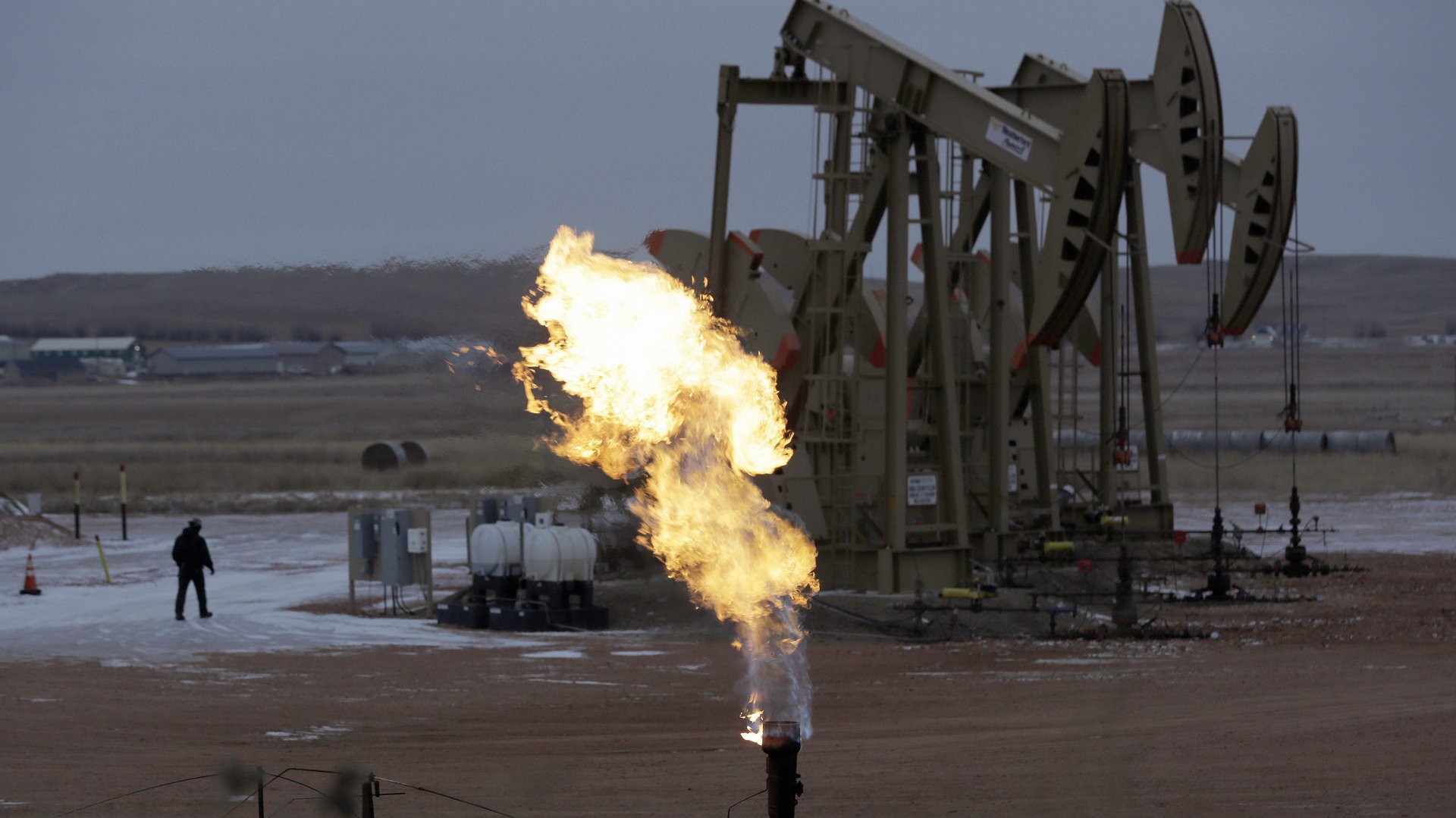Before BP can cut methane, it has to measure it
This story has been updated to reflect new details from BP about its methane monitoring goals.


This story has been updated to reflect new details from BP about its methane monitoring goals.
On Wednesday morning, fossil fuel behemoth BP rolled out a suite of new greenhouse gas reduction targets. Overall, the company plans to make its carbon footprint net zero by 2050—in other words, offsetting at least the volume of emissions released by its remaining oil and gas facilities.
The plan also takes aim at a notoriously overlooked kind of emission: methane, a greenhouse gas that is much less common than CO2 but has up to 80 times the heat-trapping power. Overall, methane is responsible for up to one quarter of man-made global warming.
A 2018 study in Science found that the US oil and gas industry emits 13 million metric tons of methane from its operations each year, much of that from leaky drilling and processing equipment. BP first promised to cut its total methane emissions in 2018, to no more than 0.2% of the volume of its natural gas production, and claimed to reach that target last year.
With the new plan, BP says it will cut that level in half by an unspecified date. And it hints at the company’s strategy for getting there: It promises to install methane measurement and monitoring equipment at “all our major oil and gas processing sites by 2023.”
That’s a critical goal, because almost all industry data on methane comes from back-of-the-envelope estimates and not objective real-time data, said Ben Ratner, a senior director at the Environmental Defense Fund who specializes in methane. Accurately measuring methane is the first step to cutting it, and new technologies are coming online to help, including laser scanners and satellites, with the help of a range of American and European space agencies, research universities, and private tech companies.
In an email, BP spokesperson Megan Baldino acknowledged that “one of the criticisms of our industry’s estimation of methane emissions is that to date it has been primarily based on engineering estimations rather than actual measurements.” The company’s plan to correct that, she said, is “to install methane measurement at all BP’s major oil and gas processing sites by 2023.”
In the fossil fuel industry, oil and gas processing sites typically refer to facilities where oil and gas are cleaned of impurities and readied for sale. Shortly after the goal was announced, Ratner pointed out to Quartz that BP’s focus on “major processing sites” could exclude the biggest source of methane emissions: production facilities, where it can leak from wellpads.
“For BP to credibly demonstrate that they’re meeting the target, they need to measure and mitigate methane from all their facilities—period,” he said.
According to the 2018 Science paper, across the oil and gas industry as a whole, processing facilities account for only around 5 percent of methane emissions. Production sites, meanwhile, account for nearly 60 percent. In addition to production and processing, other sources include distribution pipelines and storage facilities.
On Thursday morning, after an earlier version of this story was published, Baldino clarified that BP’s goal “definitely includes,” in fact, production sites like leaky wells and wellpad equipment. As for other steps in the production chain, she said, “we don’t have that level of detail at the moment.”
In corporate time, at least, BP’s self-imposed deadline for its broader net-zero goal, 2050, is still eons and many CEOs away. So it remains to be seen whether BP—the number-three most-climate-polluting private oil company of all time—will be able to clean up its act.
But for what it’s worth, the announcement is the most ambitious yet from the major oil companies. Shell, Total, and others have committed to reducing their carbon intensity (emissions per unit of production), but not eliminating them entirely. Spanish oil producer Repsol announced a commitment similar to BP’s in December, but its operations are much smaller and more localized—making its emissions easier to offset through carbon capture, reforestation, and the like.
Significantly, the BP plan also promises to halve the intensity of its “downstream” emissions—those that result from its customers burning the fuel it produces. Those emissions account for the vast majority of all fossil fuel companies’ total footprint (Chevron and Exxon have so far both sought to avoid responsibility for those emissions).
The plan promises an overhaul of BP’s public messaging, including an end to “corporate reputation advertising” and a threat to exit trade associations like the American Petroleum Institute if their philosophy is out of “alignment” with the company’s.
BP has often been ahead of its peers in piloting methane monitoring equipment and trying to curb emissions, Ratner said: “What needs to happen now is going from piloting to broad and comprehensive deployment.”